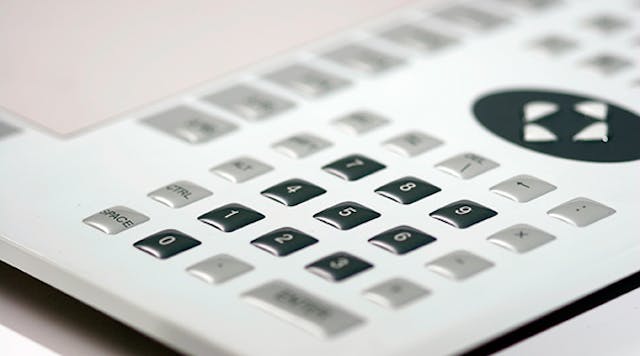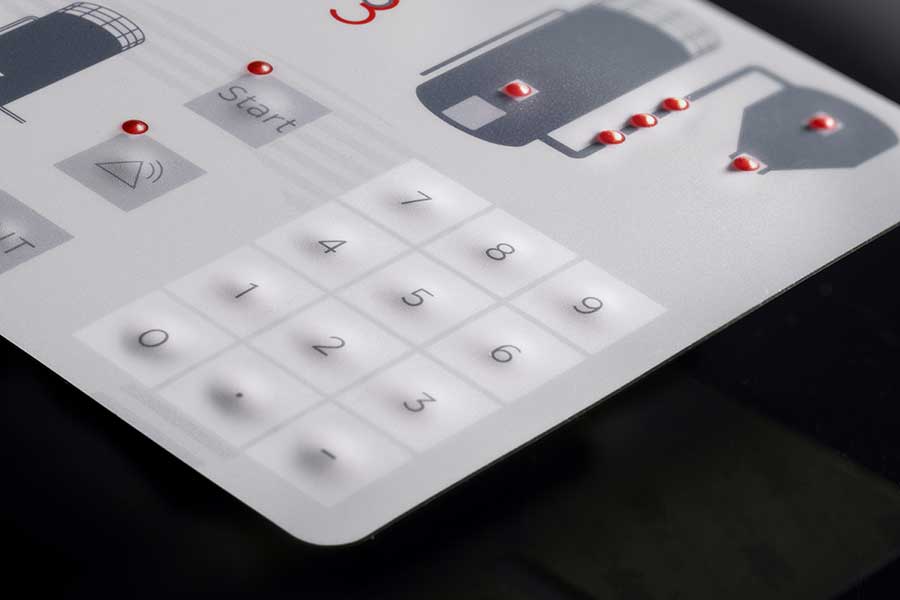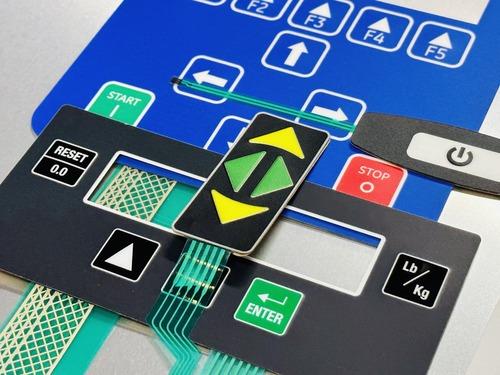Recognizing the Significance of Membrane Switches in Interface
Membrane buttons are essential parts in the layout of reliable individual interfaces, helping with not just capability yet likewise boosting aesthetic appeal and user interaction. As we check out the future fads and different advantages associated with Membrane innovation, it becomes clear that these switches are much more than simply components; they represent a merging of technology and practicality.
What Are Membrane Switches?

The spacer layer, which includes glue properties, enables the separation of the circuit layer from the overlay, guaranteeing that the button stays in a non-activated state till pressed. When stress is put on the overlay, it presses the spacer layer, connecting the gap and completing the circuit in the underlying layer. This layout not only reduces the physical space required for standard mechanical switches but additionally improves the toughness of the device, as Membrane buttons are typically immune to dust, moisture, and various other environmental factors.
Generally discovered in applications ranging from customer electronic devices to clinical gadgets, Membrane switches are important to contemporary technology, providing a efficient and straightforward interface that aligns with contemporary layout needs.
Benefits of Membrane Buttons
While countless switch modern technologies exist, Membrane Switches deal unique advantages that make them particularly preferable in numerous applications. Among the key benefits of Membrane buttons is their compact layout, which enables for space-saving applications in devices where property is restricted. Their slim account not only enhances aesthetic allure but additionally promotes lightweight construction.
Another substantial advantage is their resistance to environmental aspects. Membrane switches are normally secured versus moisture, dirt, and pollutants, making them perfect for usage sought after atmospheres, such as clinical gadgets and commercial tools. This durability extends the life expectancy of the button, decreasing upkeep expenses and enhancing integrity.
Furthermore, Membrane buttons can be tailored to meet certain design needs, incorporating one-of-a-kind graphics and colors that boost individual communication. Their tactile feedback options can likewise be customized to provide a rewarding individual experience. In addition, Membrane switches are affordable, particularly in high-volume applications, as they can be produced efficiently.
Applications in Numerous Industries

In the consumer electronic devices field, Membrane switches are common in tools such as microwaves, washing machines, and remotes. Their tactile comments and visual options improve individual experience while giving a sleek, modern appearance. In addition, automobile manufacturers make use of Membrane buttons in dashboard controls and infomercial systems, where space is restricted, and customer engagement is crucial.
Additionally, the industrial sector leverages Membrane buttons in control panels for machinery and equipment, permitting for user-friendly blog operation in frequently harsh settings. Their resistance to chemicals and dampness makes certain long life and dependability in these applications. In general, the flexibility of Membrane Switches adds substantially to their widespread usage, making them important in numerous technological domains.
Layout Factors To Consider for Membrane Switches

When designing Membrane buttons, a number of essential considerations must be taken right into account to guarantee optimum performance and customer experience. The selection of materials is vital; choosing resilient, premium substratums can boost the switch's longevity and resistance to environmental aspects such as dampness and temperature fluctuations.
Second of all, the layout of the visuals overlay ought to prioritize clarity and convenience of usage. Icons and text should be understandable, and the design should help with user-friendly interaction (membrane switches). Additionally, tactile responses is vital; incorporating a responsive dome or various other mechanisms can improve the customer experience by providing physical verification of activation
An additional essential aspect is the button's electric performance. Developers have to make certain that the conductive traces are properly made to reduce resistance and stay clear of signal interference. This includes assessing the required actuation pressure and making certain compatibility with the digital parts they will certainly user interface with.

Future Fads in Membrane Technology
As innovation remains to advance, Membrane buttons are positioned to develop substantially, driven by innovations in materials and manufacturing strategies. One arising trend is the unification of innovative materials, such as conductive inks and versatile substratums, which enhance toughness and reduce the overall weight of Membrane switches. These products not just improve the responsive feedback but likewise permit the layout of switches that can like this endure harsher ecological problems.
In addition, the assimilation of touch-sensitive technologies is transforming standard Membrane Switches into even more interactive interface. Capacitive touch sensors embedded within Membrane switch panels can offer a more responsive and user-friendly individual experience, aligning with the growing demand for streamlined, go to this web-site contemporary layouts in consumer electronics.
In addition, innovations in printing strategies, such as digital and 3D printing, enable rapid prototyping and customization of Membrane buttons. This versatility permits suppliers to react extra quickly to market needs and customer choices.
Last but not least, sustainability is coming to be a substantial emphasis, with manufacturers checking out green products and procedures. As these patterns unfold, the future of Membrane modern technology assures boosted capability, aesthetic appeal, and environmental duty, strengthening their function in sophisticated customer interfaces across different markets.
Conclusion
Finally, Membrane Switches stand for a crucial element in the design of customer interfaces, integrating performance with aesthetic versatility. Their advantages, consisting of sturdiness and resistance to environmental variables, make them appropriate for varied applications across numerous markets. Thoughtful style factors to consider improve user communication and experience. As developments in technology proceed, the evolution of Membrane switches is anticipated to further fine-tune interface, driving advancement and improving functionality in an increasingly complicated technological landscape.
Membrane buttons are integral elements in the style of reliable user interfaces, helping with not just capability but also improving visual allure and user interaction.Membrane Switches offer as a vital element in different customer interfaces, promoting a seamless interaction between users and electronic gadgets.While many button technologies exist, Membrane Switches deal distinctive benefits that make them specifically desirable in various applications.Moreover, Membrane buttons can be customized to meet specific layout requirements, incorporating distinct graphics and colors that enhance user interaction.In conclusion, Membrane Switches represent a vital component in the design of individual interfaces, integrating capability with visual versatility.